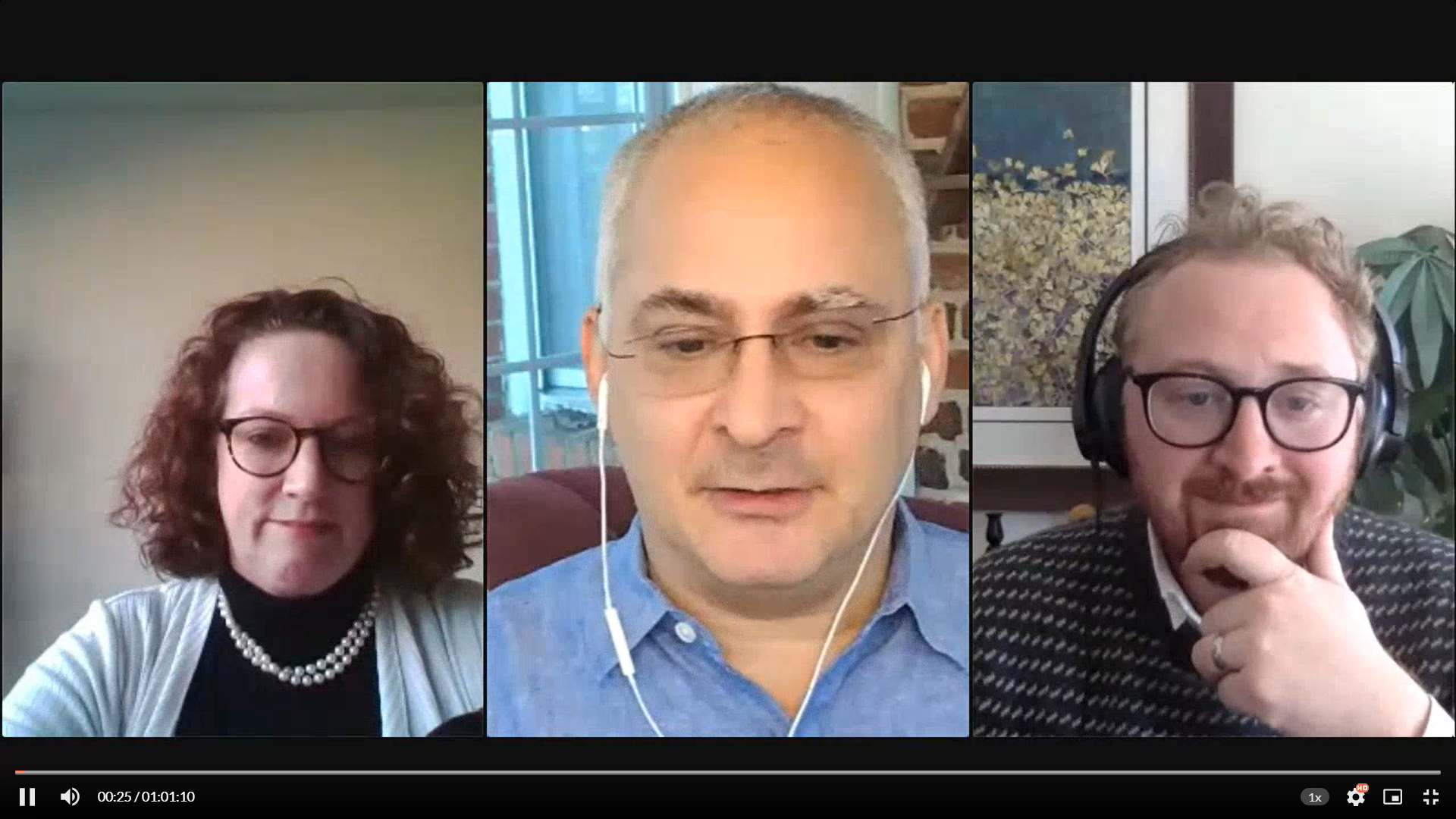What the Cabinet Exit Memos Have in Common: Climate Change and Resilience Challenges
Several weeks ago we expressed our hope that the incoming administration and the national security community will work together to address the sweeping challenges created by climate change. We stressed two main ideas.
Published by The Lawfare Institute
in Cooperation With

Several weeks ago we expressed our hope that the incoming administration and the national security community will work together to address the sweeping challenges created by climate change. We stressed two main ideas. First, pointing to the overwhelming consensus among scientists and security authorities, we argued that climate change cannot be dismissed as a political issue; resilience strategy is properly conceived of as a nonpartisan issue by anyone who cares not only about the plight of future generations but also the hazards already plaguing this one. Second, we emphasized the importance of explicitly recognizing the urgent national and global security dimensions of the threat.
Over the last week, these have conspicuously emerged as sprawling central themes in the Obama administration’s reflections on its eight-year legacy and on the challenges ahead.
This is apparent from many—indeed, most—of the exit memos issued by Obama administration agency and department heads last week. Of the 27 memos, 16 either explicitly mention the serious challenges created by global warming or make some reference to the urgent need to invest in disaster-resilient infrastructure. This is a big deal. These are Senate-confirmed appointees across many fields of expertise, each tasked with overseeing the federal response to a vast array of challenges—but who, despite the fraught political climate and limited space, saw fit to call out the problem of climate change as a major challenge, even the major challenge, for the United States going forward.
This includes not just, as might be expected, the Environmental Protection Agency (EPA), the Department of Energy, and the Department of Transportation, but also the Department of Defense (DoD), the Department of Homeland Security (DHS), the State Department, and the U.S. Mission to the United Nations.
Here are some key excerpts highlighting the security dimensions of climate change and resilience issues:
- DoD: Citing the President's September 21, 2016 memorandum on Climate Change and National Security, Ashton Carter warns that “the impacts of climate change may increase the frequency, scale, and complexity of future missions, including defense support to civil authorities, while at the same time undermining the capacity of our domestic installations to support training activities.”
- DHS: Noting the importance of the National Preparedness Goal and National Preparedness System to improving the security and resilience of critical infrastructure, Jeh Johnson cites policies already in place to “incentivize greater investment in community resilience” (e.g., the Disaster Deductible) and urged the incoming administration to reform the National Flood Insurance Program, responsible for the coverage of over 5 million insured properties nationwide.
- State: In no uncertain terms, John Kerry’s memo states, “Climate change is not just a threat to the future of our planet, but a growing and immediate threat to our national security and the lives and livelihoods of people across the globe.”
- U.S. Mission to the U.N.: Samantha Power praises the December 2015 Paris Agreement as “the most ambitious collective climate change action plan in history” and urged the UN “to marshal political pressure” as needed to persuade countries “to help the most vulnerable build resilience to the destabilizing effects of climate change.”
That’s just, shall we say, the tip of the iceberg. A few additional points about the climate change/security nexus from other departments:
- Office of Science and Technology Policy: John Holdren and Megan Smith provide what is perhaps the most detailed summary of the wide-ranging climate-related security threats in play. They applaud the Obama Administration for recognizing “that global climate change is posing growing challenges to U.S. national security” and go on to explicitly identify those challenges: “Sea-level rise threatens operations and infrastructure at important naval bases, including this country’s largest (in Norfolk, VA); extreme heat impairs the efficiency of troops and certain military equipment; military forces may be increasingly diverted to humanitarian missions following climate-related extreme events; chronic stresses from climate-change-accentuated phenomena such as droughts and crop failures can lead to civil unrest; and, eventually, flows of refugees from regions rendered less hospitable or even uninhabitable by climate change may produce political instability in areas critical to U.S. interests.”
- Office of Management and Budget (OMB): Shaun Donovan also offers a high-level assessment of the security vectors: “The impacts of climate change . . . threaten to disrupt the Nation’s agriculture and ecosystems, water and food supplies, energy system, infrastructure, health and safety, and national security.” He summarizes the administration's efforts to collaborate with all stakeholders to integrate "the best available science and data" into "the fabric of how we build, rebuild, plan, and prepare for the impacts of climate change," and he urges the next administration to invest in the U.S. transition to a "climate-smart economy" able to withstand the fiscal risks that climate change imposes on individuals, businesses, and governments.
- Treasury Department: Jacob Lew draws a straight line between climate change and global financial stability. He writes, “[W]e must recognize global climate change for the economic and existential threat that it is and band together with the rest of the world to avert catastrophe.”
And those are just the overt references to climate change as a security and stability threat. We’d be remiss if we didn’t note all of the other agencies that saw fit to make room for climate change in their bird’s-eye reviews, including:
- the Department of Agriculture (USDA)’s concerted effort to establish regional Climate Hubs as a way to give agriculture and forest producers reliable regional data to address region-specific climate risks (Tom Vilsack);
- the EPA’s detailed description of its efforts to battle climate change (Gina McCarthy);
- the Justice Department’s hat tip to its work defending the EPA's authority to regulate greenhouse gases (Loretta Lynch);
- the Interior’s description of the Department's concerted efforts to weave resilience into all of its activities and programs given the status of climate change as “the most pressing issue of our time” (Sally Jewell);
- Commerce’s work in developing “environmental intelligence necessary to help communities and businesses prepare for a changing climate” and supporting resilience decision-making at the local level (Penny Pritzker);
- USAID’s discussion of promoting food security and resilience in the face of extreme weather events (Gayle Smith);
- the Transportation Department’s stated commitment to strategically rebuilding damaged critical transportation infrastructure to be resilient against future extreme events related to climate changes (Anthony Foxx);
- Housing and Urban Development’s investments in climate-resilient housing and community development plans (Julián Castro);
- the Council of Economic Advisers’ (CEA) support for clean energy technology as part of the President’s 2013 Climate Action Plan (Jason Furman).
In short, if the cabinet exit memos are any indication, climate change (and climate change and security in particular) is not the fringe or pet issue it is so often assumed to be. Global warming is visibly emerging as an accelerant to global destabilization. No nation or region will escape its effects. That makes it the most foundational of mainstream challenges.
Why should we care about the views of outgoing cabinet leaders at this juncture? Notwithstanding the overt politicization of climate change, the memos make crystal clear that we are already being forced to deal with the consequences of global warming. Even putting aside the need to further reduce emissions to avoid the most devastating effects, we must build resilience to the impacts that can no longer be avoided. Resisting this conclusion amounts to throwing out or sidelining the efforts of careful experts and policymakers from almost every arena of administrative governance. In fact, this is why it is a mistake for those looking to discern how the Trump administration intends to handle climate change-related challenges to look narrowly at who is confirmed as head of the EPA or at the policy trajectory of the Department of Energy over the first 100 days. The impacts of climate change and the need to prepare for those impacts cannot be so confined, and neither can our conception of the resources, commitments, and personnel necessary to combat the threats.
Like his Republican and Democratic predecessors—from Ronald Reagan to George H.W. Bush, from Jimmy Carter to Bill Clinton—President Obama and his administration have recognized the need for an aggressive, comprehensive strategy to protect future generations from the traumatic fallout and destabilizing effects of a rapidly warming planet. The question now is whether Donald Trump and his appointees will choose to continue this long march and carry on this crucial work, at the level of both causes and consequences. As President Obama poignantly pointed out in his Tuesday farewell speech, we may be the last generation with the luxury of calibrating our response on both fronts. “[W]ithout bolder action, our children won’t have time to debate the existence of climate change,” he declared. “[T]hey’ll be busy dealing with its effects: environmental disasters, economic disruptions, and waves of climate refugees seeking sanctuary.”





